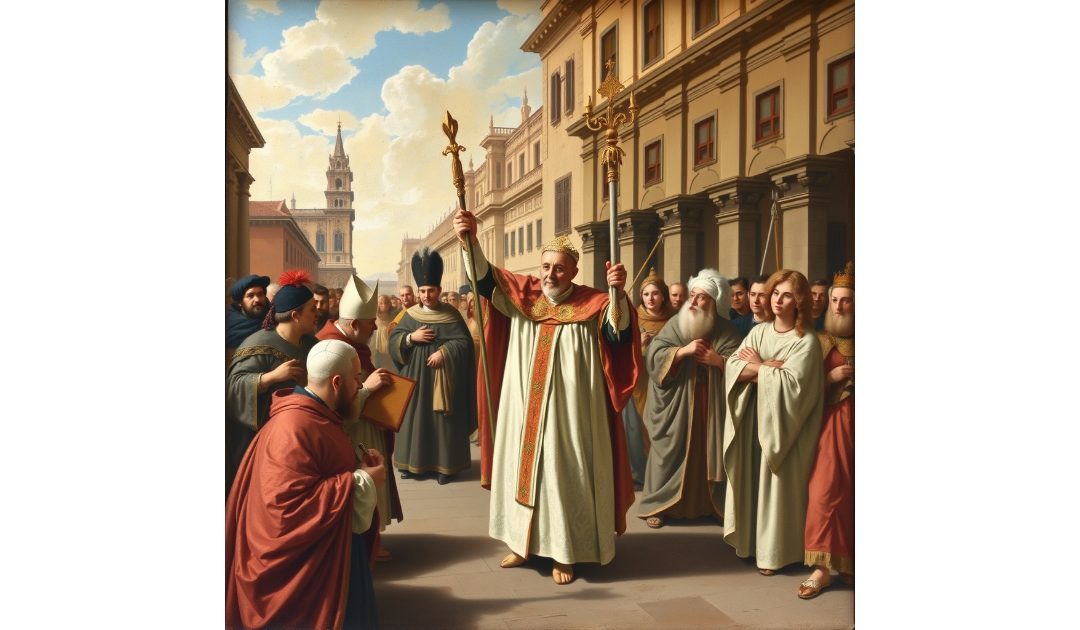On the 12th of January 1598 Pope Clement VIII seized Este Duchy of Ferrara for the Papal States. The Este family had ruled Ferrara for several centuries, and their reign was characterized by a flourishing of culture, arts, and politics. However, the late 16th century brought significant challenges that ultimately led to the duchy’s demise.
The crisis began with the death of Duke Alfonso II d’Este in 1597. Alfonso was the last male heir of the Este family, and his death without a direct male successor created a succession crisis. He had no children from his marriage to Lucrezia Borgia, and his only legitimate heir was his daughter, who was not eligible to inherit the duchy due to the laws of succession at the time. This situation left the future of Ferrara uncertain and opened the door for external claims to the duchy.
In the wake of Alfonso’s death, various factions emerged, each with their own claims to the duchy. The most notable contender was Cesare d’Este, a cousin of Alfonso II, who sought to assert his claim. However, the political landscape was complicated by the interests of the Papacy, which had been eyeing Ferrara as a potential addition to the Papal States. Pope Clement VIII, who had ascended to the papacy in 1592, viewed the annexation of Ferrara as a means to strengthen papal power in northern Italy.
Clement VIII initially supported Cesare d’Este’s claim, but as the situation developed, he shifted his focus toward annexing the duchy for the Papal States. The Pope’s motivations were multifaceted; he sought to consolidate papal authority and eliminate the influence of rival powers in the region, particularly the Spanish and the Venetians, who had their own interests in Ferrara.
In 1598, after a series of negotiations and political manoeuvers, Pope Clement VIII formally annexed the Duchy of Ferrara into the Papal States. This decision was met with resistance from the Este family and local nobility, who were reluctant to relinquish their autonomy. The annexation was not merely a political act; it also represented a significant cultural shift, as Ferrara had been a center of Renaissance art and culture under the Este family’s patronage.
The incorporation of Ferrara into the Papal States marked the end of the Este dynasty’s rule. The family retained some titles and properties, but their political power and influence were effectively extinguished. The annexation also had lasting implications for Ferrara itself. The city, which had thrived under the Este’s patronage, experienced a decline in cultural vibrancy as it became more directly governed by the Papacy.
In the years following the annexation, the Papacy sought to maintain the cultural heritage of Ferrara, but the loss of the Este family’s patronage led to a shift in the artistic and cultural landscape. While the Papacy continued to support the arts, the unique character of Ferrara as a center of Renaissance culture diminished.
This was my selection for today’s post because it featured in Fire and Earth, the second book in the Sir Anthony Standen Adventures. Fire and Earth was inspired by the burning of Giordano Bruno for the heresy of writing that the Earth revolved around the Sun. It was Pope Clement VIII who declared him a heretic.

